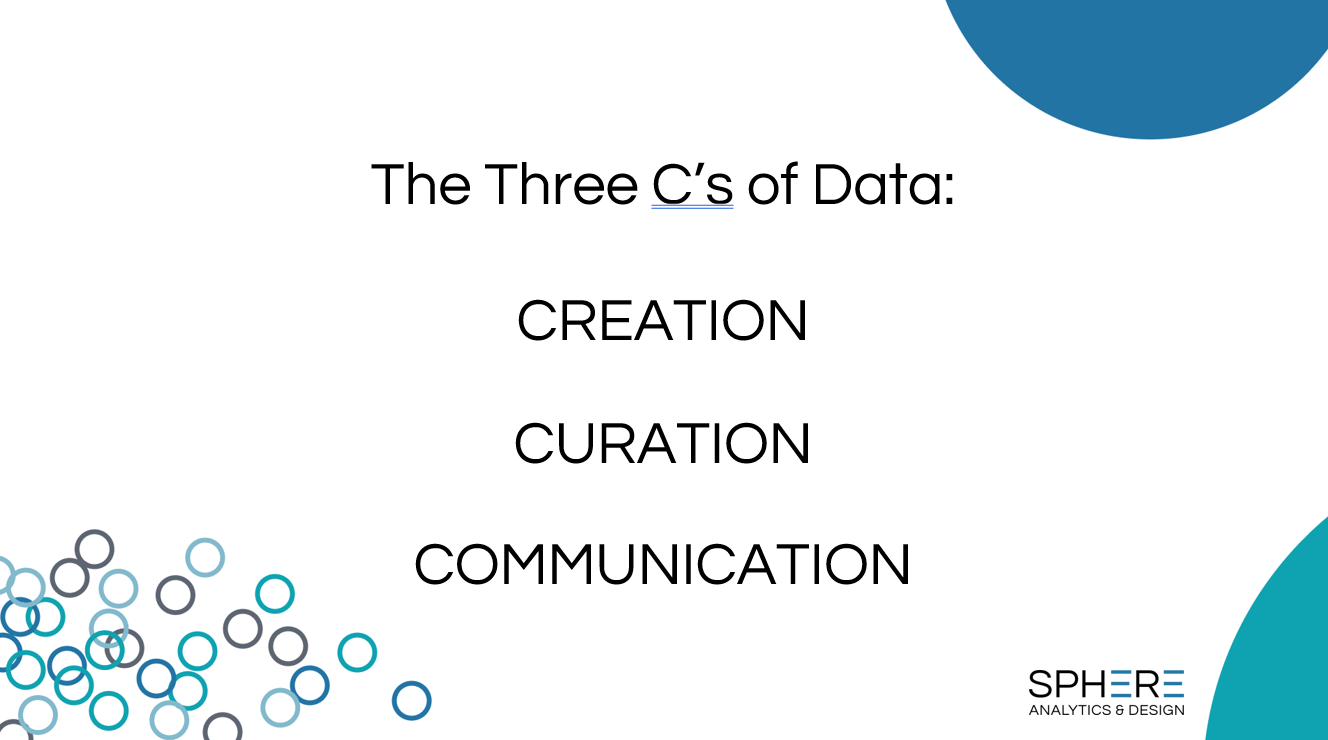The Three C’s of Data
In the past few weeks, Mike and I have encountered situations where we needed to succinctly describe what Sphere does. The first instance was during a casual conversation with a small business owner, and the second occurred during an insights presentation to a group of stakeholders for one of our projects. This scenario, commonly known as the 'elevator pitch,' occurs often, and while we have a concise version ready, I've noticed that it becomes increasingly difficult to stick to just one script when there's time for more elaboration.
For instance, when we explain that 'We help businesses get more out of their data, uncovering and sharing accessible, understood, and trusted insights,' the inevitable next question is, "Can you give me an example?" It's understandable given the vagueness of our initial answer.. Unfortunately, providing the right example on the spot isn't easy for us without first asking some follow-up questions. After all, helping businesses utilize their data more effectively is a broad topic, and each business faces different challenges based on factors such as size, scale, maturity, industry, and other characteristics.
Given enough time, I've found that the best way to address this question is by summarizing the various general types of analytics work we've supported, both at Sphere and in our broader professional experiences. I've categorized them as "The Three C's of Data."
The first category is data creation. This is especially relevant for small businesses or those aiming to address new or emerging business questions. One of the most common barriers these clients face is generating the data they need to learn and make informed decisions. It goes beyond just "gathering" data, as that implies the data already exists somewhere. In this case, the relevant data doesn't exist, and we must create it. At Sphere, we frequently assist these types of customers in building systems that generate the necessary data and ensure its quality and usability.
The second category is data curation. This challenge affects companies of all sizes. Despite the vast amounts of data generated, only a few businesses effectively leverage that data to make better decisions. At Sphere, data curation involves the process of organizing, assembling, integrating, and optimizing datasets to enable business leaders to obtain answers to their most pressing questions more rapidly. When done correctly, we often see the cycle times from business question to answer reduced from weeks (or longer) to just a few hours.
The third category is data communication. Similar to any form of communication, effective data communication relies on accurate encoding and decoding of information. Even with high-quality, well-curated data, it may fail to translate into business value if it is not effectively communicated. At Sphere, we help clients address these challenges by applying our strong background in data visualization and data storytelling to facilitate efficient translation of data into business insights. This often involves developing optimized dashboards and analytic products, as well as creating key talking points or enhancing slides and visuals for presentations.
These three categories represent the most common challenges we encounter when working with companies. The solutions to these challenges can range from simple and straightforward to indicating a more fundamental opportunity. In either case, at Sphere, we take pride in being a trusted partner that helps organizations overcome these obstacles and become more capable and effective going forward. Since these challenges are prevalent across all industries, the companies that successfully overcome them often gain a distinct and measurable advantage in their operational effectiveness.
—Derek Cyphers, Co-Founder and CEO

